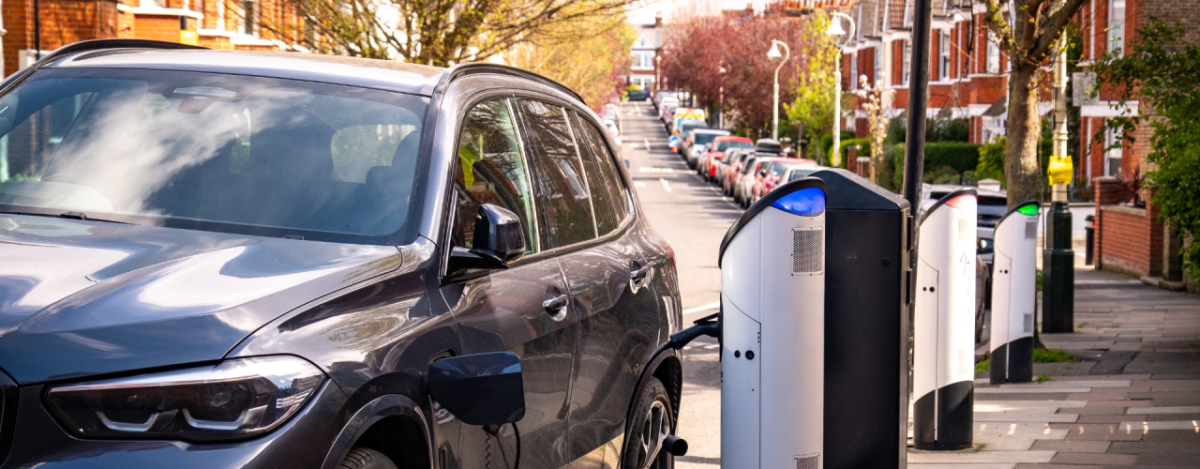Mastercard: Charging Ahead
By Anthony Venutolo

|
about In Tech In Tech is our regular feature highlighting what people are talking about in the world of technology — everything from crypto and NFTs to smart cities and cybersecurity. |
In the U.S., there’s a prevailing narrative, propelled in part by politics, that the electric vehicle boom is over. But while growth is slowing, new figures released during the annual Detroit Auto Show point to strong sales globally, with a 25.6% year-on-year increase in December for fully-electric and plug-in hybrids. And even in the U.S. and Canada, EV sales rose nearly 9% in December.
But the leader in EV adoption is Norway, according to the BBC, with 88.9% of new cars sold in the country in 2024 electric.
The government there has long held supportive legislation making electric cars a more attractive and economically viable option for consumers. Dating back to the ‘90s, the transition to EVs involved consistent policies like tax incentives for EVs and higher taxes for petrol and diesel cars. Other perks include free parking and access to bus lanes.
"We think it's wrong to advise a customer coming in here today to buy an ICE [internal combustion engine] car, because the future is electric," says Ulf Tore Hekneby, chief executive of the Oslo-based car dealership Harald A Møller. "Long-range, high-charging speed. It's hard to go back."
Despite being a major oil and gas producer, and even after early Norwegian EV manufacturers ceased operations, Norway aims for all new cars sold to be zero emissions this year.
Even more vital to widespread adoption, Norway supports a comprehensive network of public charging stations. This extensive infrastructure ensures that EVs are convenient to use, even in colder climates where battery performance can be an issue. As a result, consumers have adapted their habits to charge whenever possible instead of waiting until necessary.
Indeed, another new study out in conjunction with the Detroit Auto Show reveals that infrastructure is a sticking point for car buyers globally — 60% of those surveyed by Tata Consultancy Services say charging infrastructure was a major challenge (although 64% said that an EV is likely to be their next vehicle).
At the Detroit show, Jeep showed off its first all-electric SUV, the all-wheel-drive midsize Wagoneer S, and Cadillac highlighted the Vistiq, adding a new three-row SUV to its EV lineup. And last week at CES, Honda stole the show with the debut of its electric 0 series prototypes, including the futuristic, wedge-shaped 0 Saloon, and the news that it could go on sale in North America next year.
Meanwhile, Tesla recently unveiled the facelifted version of their popular Model Y on its China consumer site, indicating that the automaker may be ready to start production on the updated vehicle.
According to a report by the German publication Handelsblatt (and echoed in Road & Track), the first European models of the Model Y could roll off the production line as early as this week.
Although Tesla this month reported the first full-year drop in sales in its history as a public company, the Tesla Model Y continues to be a juggernaut for the company, becoming the fourth biggest-selling car in the U.S. trailing the Ford F-series pickup, the Chevy Silverado pickup, and the Toyota RAV4, according to Car & Driver.
The Australian publication Drive, reports that the Model Y is expected to arrive in Australia by May. That said, there’s been no official announcement from Tesla regarding the U.S. release date.
The updates to the Model Y closely mirror those applied to the Model 3 sedan last year, which includes a revised front end with a new bumper and headlight assembly and a new taillamp that spans the hatchback. Inside, the Y benefits from improved material quality similar to the Model 3, while notably retaining the turn-signal stalk — a feature that many drivers appreciate.
Although U.S. pricing for the refreshed Model Y has yet to be announced, it’s anticipated that the new model will not deviate significantly from the current price of $44,630.
‘Bye,’ robot
With a major redesign to appeal to a new generation, Chuck E. Cheese is making a comeback four years after emerging from bankruptcy, CNBC reports. And yes, sadly, that means those animatronics are gone.
Even though it emerged from their financial woes, another threat loomed: entertaining a new era of tech-savvy children and their parents.
Chuck E. Cheese, founded in 1977 in San Jose by Atari co-founder Nolan Bushnell, has become an iconic childhood institution because of its pizza, birthday parties, and animatronic mouse mascot and band. But the days of physical tickets, SkyTube tubes, and animatronics are over.
CEO Dave McKillips says the idea pulling the robots came with some debate but ultimately was a no-brainer. “Kids were consuming entertainment in such a different way, you know, growing up with screens and ever-changing bite-sized entertainment.” These days, the 470 locations feature trampolines, a smartphone app, tons of arcade games and floor-to-ceiling jumbotrons.
According to McKillips, Chuck E. Cheese is looking into various entertainment collaborations that would turn its mouse mascot into a major character, in addition to 30 license agreements for items ranging from clothing to frozen pizzas. Embracing the 21st century continues with a YouTube account with almost a half million subscribers who tune in for videos featuring their cast of characters and six albums of music featuring Chuck E. Cheese available on streaming platforms.

